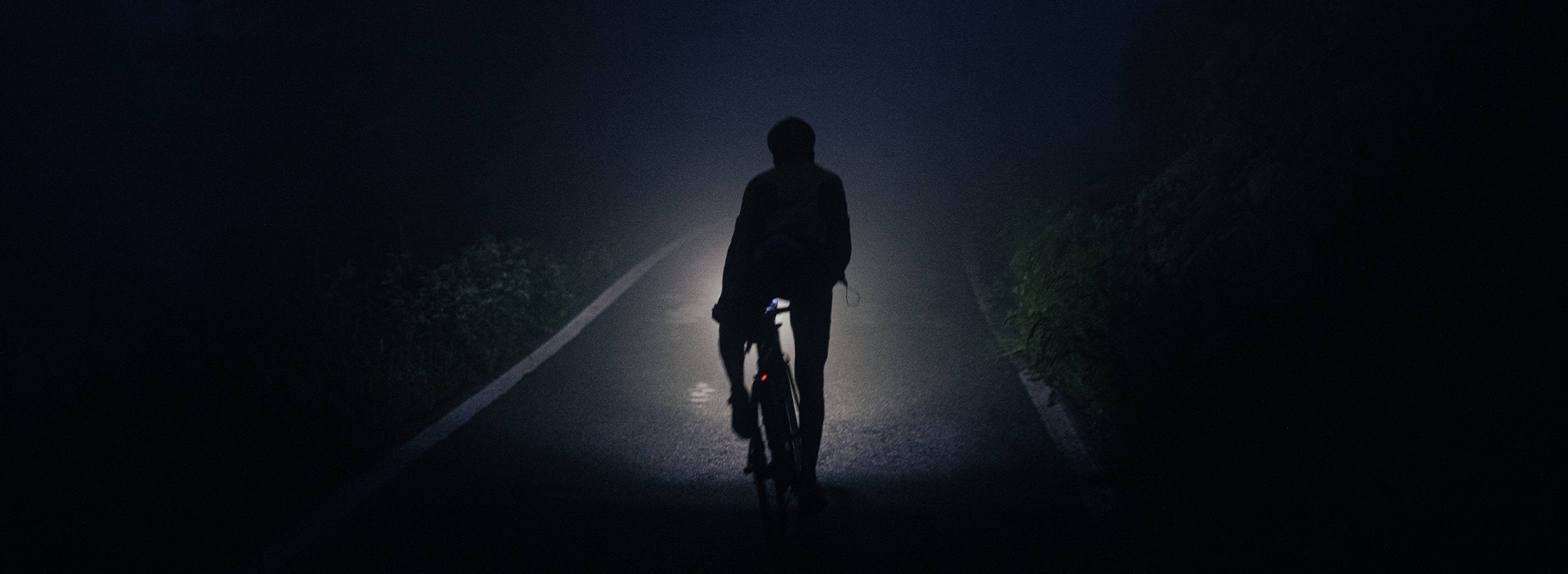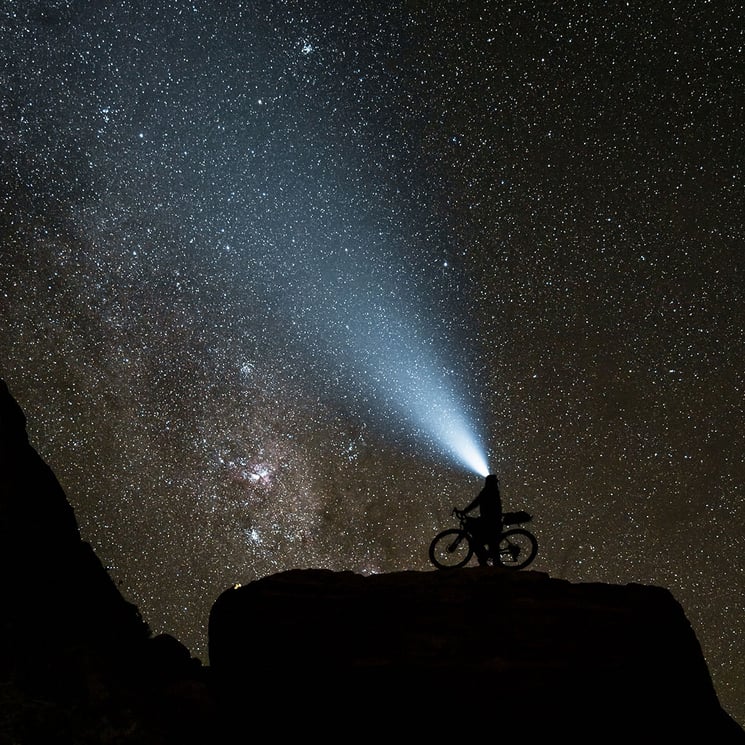- en
Choose the lights for gravel bike: visibility, ease of use, durability
Seeing and being seen are vital for safety, whether your ride takes you on or off-road. These are the two main requirements of the front and rear bike lights. In this sector of accessories, almost all lights utilise LED lumination. The battery consumption is minimal and the possibility to charge the batteries even during the ride consequently increase autonomy while producing a constant and stable illumination.
Regardless of the discipline, cycling lights have some important technical specifications that define the quality and consequently their intended use.
Here we give you some tips on how to choose the best bike lights.

Lux and Lumens
Brightness is measured in lux (lx) which is the relative unit of measurement and corresponds to 1 lumen per square meter. Basically, the lux identifies the amount of light that lights up 1 square metre.
The light power emitted by a source is instead measured in lumens (lm). These are therefore two different units of measurement. The lumens are constant while the lux varies according to the distance between the light source and the illuminated surface. The best lights to be used with gravel bikes have a maximum power generally between 1,800 / 2,000 and 3,600 / 3,800 lm. Consequently, a front light equipped with these characteristics is indispensable for all those who spend many hours in the saddle and also those of us who pedal during darkness.
Depth of light and flooding
The best bike lights will always offer a combination of light depth, otherwise known as spot lighting and flood lighting. The spotlight illuminates a precise point on which all of the lights intensity is concentrated, while the floodlight is characterised by a wider and more uniform beam. The right combination of the two types combined with a powerful light beam gives you good peripheral vision, displaying all the dimensions of the surrounding environment, from the road directly in front to the trees by the side of the road. Some lights offer the possibility to modify the technical characteristics of the devices by introducing different degrees of intensity and use of the two types of light.
Light beam and angle
The light beam defines the path of light which can be more or less concentrated, thus displaying a form similar to a wide or narrow cone. The light angle identifies the ability of a source to illuminate a more or less wide area.
In addition to the technical characteristics of the actual light we must also take into consideration:
- index of impermeability and protection,
- battery life
- possibility to recharge devices while they are on and while riding
- possibility to mount the light on various supports (eg.frame, high-visibility bib, helmet, etc.).
Sign up to our newsletter
Fill in the form below for updates on all that's new in the Gravel world
If you no longer want to receive news from us, you can unsubscribe at any time.
